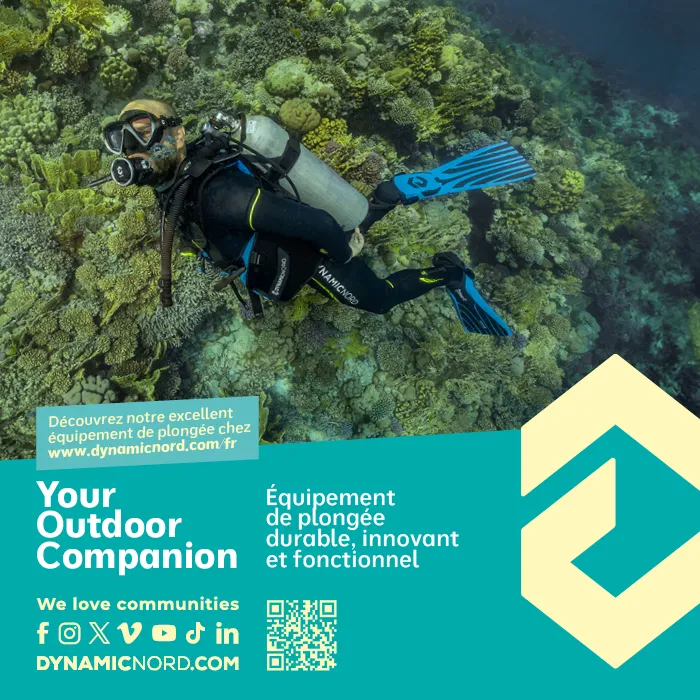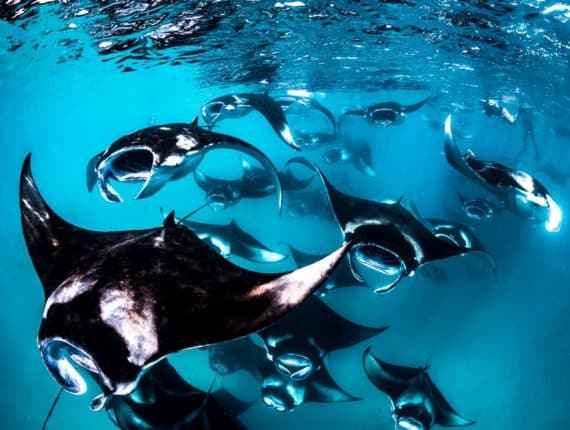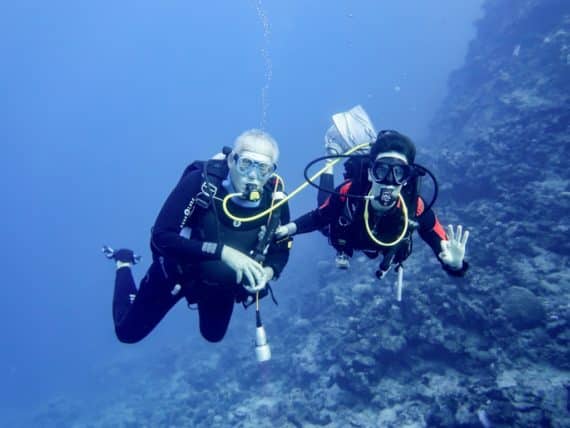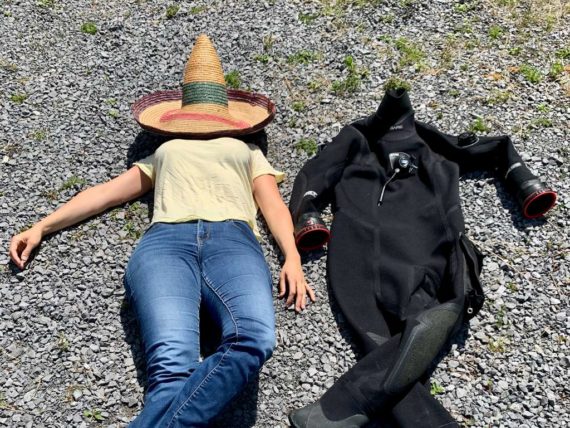Swimming-induced pulmonary edema: recognize, prevent and act
Swimming-induced pulmonary edema
30% of victims arriving in recompression chambers would be victims of swimming-induced pulmonary edema. However, these are not just scuba divers. Indeed, freedivers, snorkelers or simply swimmers are also concerned.
The first time I heard about swimming-induced pulmonary edema was in 2017 through a person who told me about his unfortunate experience with it. I had lost sight of swimming-induced pulmonary edema (SIPE) until a doctor gave me that impressive 30% figure. So I decided to take a little more interest in the issue.
What is swimming-induced pulmonary edema?
Swimming-induced pulmonary edema, also called SIPE, is a respiratory accident that can occur when getting into the water, during descent, ascent or when returning to the boat or the shore. It can lead to discomfort up to loss of consciousness.
For divers, swimming-induced pulmonary edema would be the first cause of respiratory accidents in France. It’s impressive!
Causes of SIPE
Swimming-induced pulmonary edema occurs as a result of the rupture of the alveolocapillary barrier. It is due on one hand to the increase in pulmonary pressure. And on the other hand, to the inspiratory depression resulting from the greater difficulty of breathing underwater (compression, regulator too “hard” …)
The increase in pulmonary pressure is favored by immersion, effort and cold
In immersion, due to the pressure, we have almost a liter more blood in our rib cage. This causes a significant effect on lung pressure.
Pulmonary pressure also increases in case of swimming or exertion. Indeed, for the same intensity of effort, there will be a greater increase in pulmonary pressure in immersion. These increases in lung pressure are more pronounced with age.
Effect of cold: the cold will cause the vasoconstriction of the smallest vessels. In addition, the cold will force us to cover ourselves. However, the neoprene suit causes a compressive effect that strengthens the hydrostatic pressure. The thicker the suit, the greater the effect will be.
Breathing will be more complicated under water because of compression. It is also more difficult because of your rig. Therefore, it is certainly interesting to choose a regulator with the best flow possible.
Risk factors
Several risk factors have been identified in studies about swimming-induced pulmonary edema.
- Age (> 50 years)
- Previous cardiac pathologies
- The effort (swimming against the current, follow a buddy swimming too fast …)
- The cold
- Over-hydration
- The rig (“hard” regulator)
- Depth
- Having already had swimming-induced pulmonary edema (recurrent character)
What are the symptoms?
Swimming-induced pulmonary edema has existed for a long time, but is still relatively little studied, and most certainly also poorly known. In diving, it is increasingly present in discussions, interventions and / or training on accident prevention. The symptoms have probably sometimes been confused with those of pulmonary overpressure.
Shortness of breath, cough, sputum…
As this is a respiratory accident, swimming-induced pulmonary edema will manifest itself as breathing difficulties starting in the water.
Breathing difficulties related to SIPE will not improve as long as the person is in the water. Unlike a simple shortness of breath that will disappear, most of the time, when ascending.
How will the person feel?
- Breathing difficulty ranging from simple discomfort to distress with the impression of dying
- No improvement even on ascent or effort
- Cough
- Chest pain
- Sputum of pink moss or blood
- Panic
- Discomfort
- Loss of consciousness that may be responsible for the person’s drowning
- Cardio-respiratory arrest in the most severe cases
Symptoms may be aggravated by the ascent. Indeed, if the ascent requires decompression stops, the person and the rest of the team will have to make a choice. We rarely talk about this difficulty that will present itself to the members of a team in case of problems. For the diver with swimming-induced pulmonary edema, the priority will certainly be to get out of the water ASAP, because there is a vital risk there. For the victim and the other members of the team, there will also be a risk of decompression sickness. Therefore, the team will have to decide what to do.
Any breathing difficulty during a diving activity should always be taken with the utmost seriousness!
Knowing how to react
If you experience breathing discomfort, do not be afraid and communicate directly with your buddy. With the help of the diving signs, say that it is not okay and that you are out of breath. No need to be ashamed to communicate.
If despite the rise or stop of the effort, the discomfort persists, or even strengthens, the objective will be to get out of the water as quickly as possible.
As a buddy of a person who has shortness of breath, you should immediately get closer to him and help him. Start the ascent without delay. If the signs persist, you should do everything to get the person out of the water as quickly as possible. This, without putting yourself in danger.
As soon as you reach the surface, report to the boat or the person responsible for surface safety that you have a problem. And trigger the rescue chain.
On the surface
- Call for help specifying that it is a diving accident.
- Give oxygen to the injured person at a rate of 15l/minute if he can breathe alone.
- Reassure
- Undress the person if possible (or open the suit to release the rib cage)
- Do not hydrate the victim
- In case of cardio-respiratory arrest, start cardiac massage without waiting
- If you did ascent without making your deco-stops, also report it to the rescue team. If possible, get on oxygen and drink water while waiting for help.
Evolution
If the swimming-induced pulmonary edema is quickly managed (out of the water and put on oxygen), the evolution will be positive and the person will recover more or less easily depending on the severity of the SIPE. Without management, swimming-induced pulmonary edema can lead to cardio-respiratory arrest, loss of consciousness and drowning.
Most of the time, the victims of the SIPE will recover.
Prevention: how to avoid swimming-induced pulmonary edema?
First of all, as it should be the case for all dives, the prevention of swimming-induced pulmonary edema begins with a self-assessment of your health. If you are not in good shape, you should adapt your dive or give up. If in doubt, talk to your doctor. Then make sure you have a responsible attitude by following these few recommendations:
- Do not dive if you are under stress
- Adapt your dives to your age. Yes, the body is aging and there is nothing you can do.
- Avoid if possible the effort when diving. Refuse to swim against the current and prefer to pull your SMB to report yourself. The boat will pick you up.
- Cover up so you don’t get cold, however, run away from the overly tight neoprene suits.
- If there is nothing special to see deep, limit your depth.
- Be sure to regularly maintain your dive regulator
- Even if you know the importance of good hydration while diving, do not over-hydrate. This is unnecessary and represents a risk factor for developing swimming-induced pulmonary edema.
Conclusion
Swimming-induced pulmonary edema or SIPE is increasingly entering the language of divers. Maybe this is because it is better known. Perhaps it is also due to the fact that the population of divers is aging. Still, in an idea of accident prevention, it is good to know about it, to know what to do and to share the information.
Share your experiences in a comment below.
And above all… don’t forget to be happy 🤗
Join my Facebook page for more sharing
Hélène






